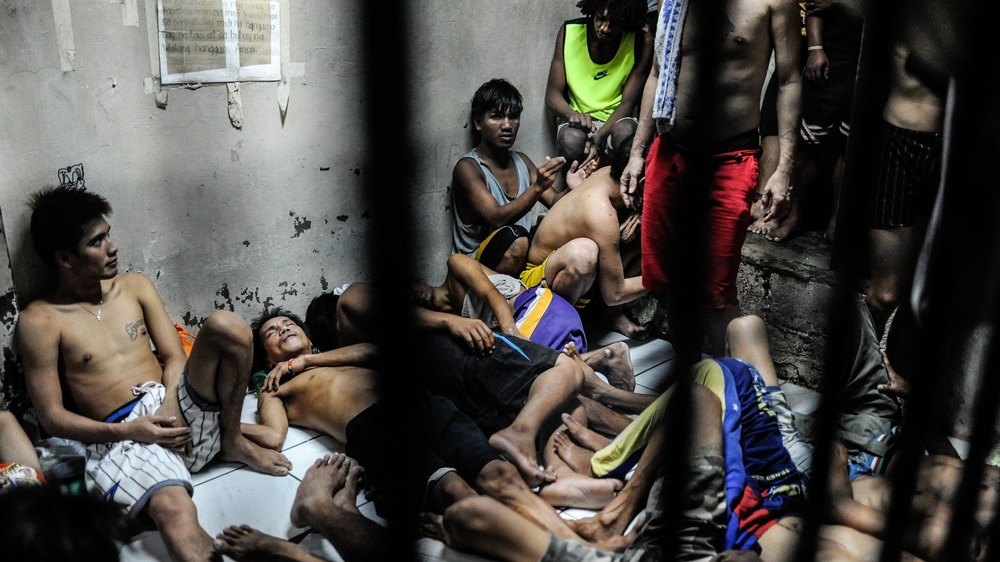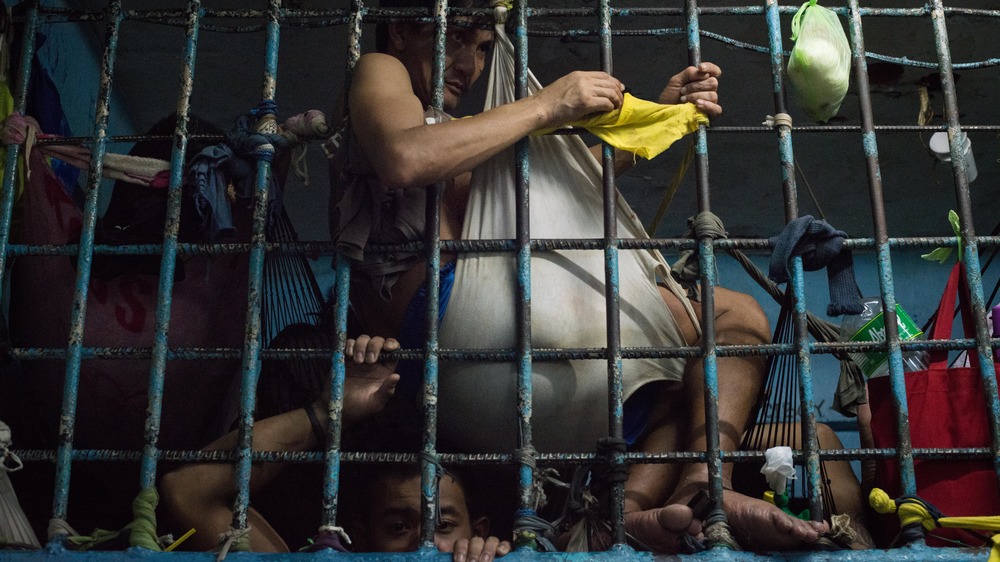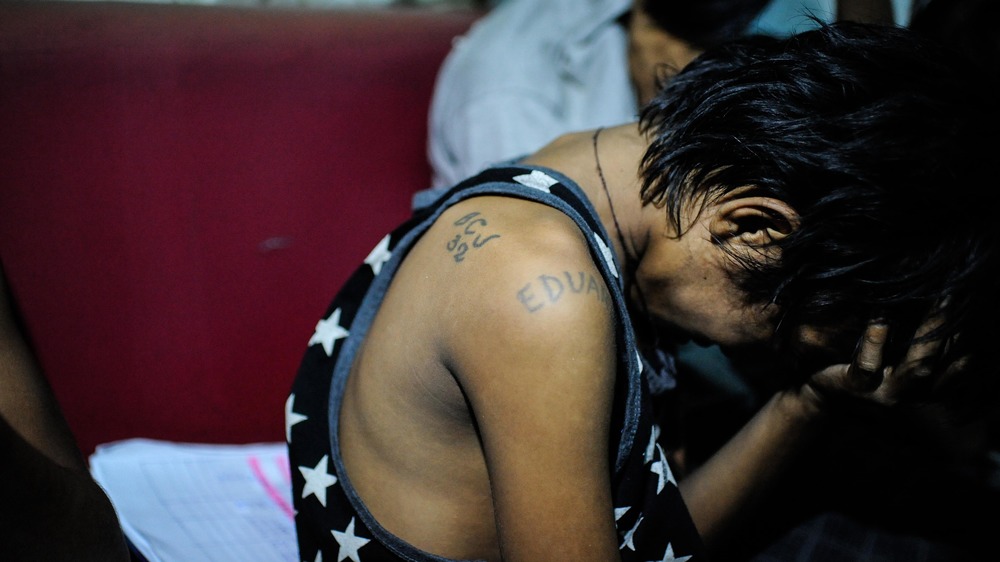Inside The World's Toughest Prisons: The Truth About Manila City Jail
In June 2016, Philippine President Rodrigo Duarte assumed power, vowing to wage a "war on drugs" in which he promised he would wipe out the problem by killing anyone involved in the drug trade. "If I make it to the presidential palace I will do just what I did as mayor. You drug pushers, holdup men, and do-nothings, you better get out because I'll kill you," he said the day before he was elected, according to Human Rights Watch. Since then, his war on substances that are harmful to human life has gone on to kill more than 12,000 people. The war appears to be targeting the poor, rather than drug peddlers, as Human Rights Watch uncovered instances of police falsifying evidence as bogus justification for extrajudicial killings. But the campaign continues to this day.
In addition to the thousands of deaths, Duarte's war on drugs has also packed the country's prisons far beyond their capacities, creating dire security and public heath situations. Al Jazeera reported in 2018 that prisons in the Philippines are the world's most crowded. One particularly congested facility, Manila City Jail, is the subject of a new episode of the Netflix series Inside the World's Toughest Prisons, which just released its fifth season of gripping documentaries about the most harrowing detention centers across the globe. The jail regularly operates at thousands of times more than its capacity, and the vast majority of the inmates there haven't even been convicted of a crime.
Gangs keep the peace in Manila City Jail
"Our ideal capacity should be around 1,100 inmates. But the actual jail population is up to 6,300 inmates," Jayrex Bustinera, an official at Manila City Jail, told Al Jazeera. He said that with so many prisoners in a facility not meant to hold anywhere near that many, prison guards have had to work out a deal with gangs in order to keep the peace as best they can. "We delegate some of the authority to the inmate leaders where inmates can police co-inmates ... They help us institute peace and order." Photos of the prison reveal cramped, unsanitary conditions, inmates crowded in on floors and benches, sleeping shoulder to shoulder. Some are forced to sleep sitting up. Diseases such as tuberculosis and infectious skin conditions afflict most of the prison population, as well as the Al Jazeera journalists who visited the facility, all of whom became sick after reporting there for two weeks.
Keeping such a fraught situation from boiling over isn't easy. Rogelio Reyes, who by 2018 had spent 14 years in the jail without ever being convicted of a crime, acts as an advocate for inmates to prison authorities and attempts to maintain order among his fellow captives. "If you are angry, you will not survive," he said. "If your heart is full of anger, most probably you will be in the stockroom ... because you will quarrel with the many inmates. Here you have to control yourself."
Being incarcerated at Manila City Jail is equivalent to torture
"When you are detained in Philippine jails, you are being tortured," Philippine human rights activist Lea Armamento told The New York Times in 2019. That reportage found a dormitory in Manila City Jail with a capacity of 170 filled to the brim with 518 inmates trying to get some sleep. The situation in this and other Philippine prisons has been so bad even before Duarte's reign of terror, the United Nations Subcommittee on Prevention of Torture called out the country's penal system in 2015 for overcrowding.
And the gangs attempt to control the teeming masses by ruling with an iron fist. Infractions of the fragile order are punished with physical violence. A fistfight will earn an inmate five lashes with a wooden bat, and that number can go as high as 20 if blood was drawn. Although not legal, this type of law and order is born out of necessity. While the government recommends one guard to every seven inmates, that ratio is more like one to every 528. "Formally, we don't allow inmates to police other inmates," said Bustinera. "Informally, we do because of a lack of resources."
Overcrowding became a more urgent problem as the coronavirus pandemic spread across the globe. According to XinhuaNet, the country had released over 81,000 inmates from Philippine prisons from March to October 2020 in an effort to prevent the spread of the virus that causes COVID-19 among the country's prison population.


